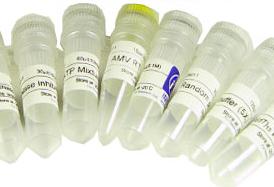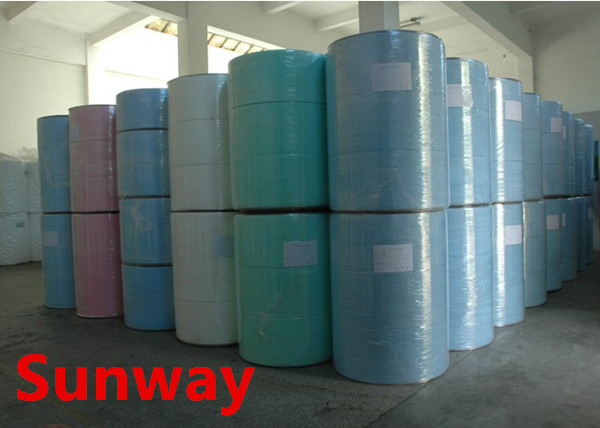
Endogenous interfering factors that may affect the results of enzyme immunoassay ELISA
Endogenous interference factors generally include rheumatoid factor, complement, high concentration of non-specific immunoglobulin, heterophile antibodies, certain autoantibodies, anti-mouse Ig antibodies induced by treatment or diagnosis with mouse antibodies, cross-reactive substances, etc. . In daily clinical serum (plasma) specimens, a considerable proportion of the above-mentioned various interfering substances are contained to varying degrees, resulting in false positives in the measurement results.
1. Rheumatoid factors (RF) In the serum of rheumatoid patients, other diseases and normal people, they often contain high or different concentrations of RF. RF is generally of IgM type, but also has IgG and IgA types. The characteristic of non-specific binding is generated because in the ELISA assay, it can bind to the specific antibody IgG coated on the solid phase and the specific antibody IgG added subsequently to the enzyme label, resulting in a false positive result. Especially in the capture method IgM type specific antibody performance is most obvious, because the solid phase coated antibody is anti-human Hong chain antibody, the presence of IgM type RF can make it bind to the solid phase in large amounts. In order to avoid the interference of RF on ELISA measurement, the following measures can usually be taken:
(1) Dilute specimens: This is particularly useful for judging specific IgM antibodies such as anti-HAVIgM, anti-HBclgM, and TORCH IgM antibodies for acute pathogen infection. Because of acute infection, the specific IgM antibody titers in the blood circulation are usually very high, while the RF titers are usually relatively much lower. Therefore, when the sample is diluted before the measurement, the specific IgM can still be detected due to the presence of high titers, while the non-specific RF will become very low titers due to dilution, which will hardly interfere with the measurement. At present, some specific IgM detection ELISA kits do not require dilution of specimens and direct detection. This facilitates the operation of laboratory technicians, but it is prone to false positive results, and due to certain chronic infections, such as HBV infection, blood circulation HBelgM can continue to exist in a certain titer, and the specimen can be tested without dilution to produce a positive result, thereby losing the diagnostic value of anti-HBclgM for acute HBV infection. Therefore, in clinical laboratories, kits that require a 1: 1 000 dilution of specimens must be used for testing to ensure the reliability and clinical application value of the corresponding test items.
(2) Change the enzyme-labeled antibody: Since RF binds to the Fc fragment of IgG, if the F-fragment of the antibody to be enzyme-labeled is digested and removed, only the F (ab ') 2 part of the labeled enzyme with specific binding function is left, In the measurement, RF interference can be avoided.
(3) The RF in the specimen is pre-blocked with denatured IgG: add the heat-denatured (63 ° C, 10 min) animal IgG to the specimen diluent, or connect the denatured IgG to a particle Similar to polystyrene microspheres or micropores, and then add clinical serum samples, after the reaction, then draw out the samples for testing. In addition, when measuring specific IgM, anti-human IgG can also be used to remove RF and IgG from clinical specimens.
(4) When measuring antigen, a reducing agent that can degrade RF can be added to the specimen: such as 2-mercaptoethanol. 2-Mercaptoethanol and other reducing agents can cleave the thiol group in the antibody, so it can remove RF interference, but it is only suitable for antigen determination.
(5) Coating or enzyme-labeled secondary antibodies use specific chicken antibody IgY: RF does not react with chicken IgY. If both coating and enzyme-labeled secondary antibodies are chicken IgY antibodies, they will not be interfered by RF in the specimen.
2. Complement In the solid-phase enzyme immunoassay, both solid-phase specific antibodies and enzyme-labeled secondary antibodies from mammals activate the human complement system. On the one hand, the solid-phase antibody and the enzyme-labeled secondary antibody can be destructurized by the antibody molecule during the solid-phase adsorption and binding process, so that its F, segment complement C1, and binding site are exposed, so that C1 becomes An intermediary cross-links the two, resulting in a false positive result. On the other hand, solid-phase antibodies can also cause false-negative results or lower the quantitative measurement results due to the activation of complement binding and blocking the antigen epitope binding ability of the antibody. Interference caused by complement can be avoided by the following methods:
(1) Heating serum clinical samples to inactivate complement: 56 ~ C30 min heating can make complement C1 in the specimen. Inactivated.
(2) Coating or enzyme-labeled secondary antibodies use specific chicken antibodies: chicken antibodies do not activate the human complement system. Therefore, the use of specific chicken antibodies will not cause false positive and false negative interferences due to complement activation.
3. Heterophile antibodies (heterophilie antibodies) Human serum contains anti-rodent animals (such as mice, horses, sheep, etc.)
Antibody of immunoglobulin (1g), namely natural heterophile antibody. Studies have shown that natural heterophilic antibodies (1gG) can be divided into two categories, one type (85% of false positives caused by it) can bind to the Fab region of goat, mouse, rat, horse and bovine IgG, but Does not bind to the Fab region of rabbit IgG. The other (caused by 15% of false positives) can bind to epitopes in the Fc region of mouse, horse, bovine, and rabbit IgG, but not in goat and rat IgG. Heterophile antibodies can be false positive by cross-linking solid phase and enzyme-labeled monoclonal or polyclonal antibodies. Interference caused by heterophilic antibodies can be avoided by the following methods:
(1) Use the specific rabbit F (ab ') 2. The fragments serve as solid phase or assay enzyme-labeled antibodies.
(2) Add excess animal Ig to the specimen or specimen dilution to block possible heterophile antibodies. However, when the amount of addition is insufficient or the subclasses are not valid at the same time.
(3) Use target-specific non-Ig affinity protein (affibody) instead of one of solid phase or enzyme-labeled antibody. Phage display technology was used to display human IgA binding affinity protein from a single S. aureus protein A (SPA) combined library for the determination of IgA without being affected by heterophilic antibodies.
(4) Use specific chicken antibodies as solid phase and assay antibodies.
4. Due to the use of mouse antibody treatment or diagnosis of induced anti-mouse Ig antibodies in clinical, there are attempts to use mouse-derived monoclonal antibodies for targeted therapy, and radionuclide-labeled mouse-derived monoclonal antibodies for imaging diagnosis, etc. It may cause anti-mouse antibodies in the corresponding patients. This anti-mouse antibody enzymatic immunoassay using murine monoclonal antibodies can produce false positive results. Interference caused by anti-mouse antibodies can be avoided by the following methods:
(1) Use specific antibody F '. bf): The fragment is used as a solid phase or an enzyme-labeled antibody.
(2) Add excess mouse Ig to the specimen or specimen dilution to block possible anti-mouse antibodies.
(3) Use specific chicken antibody IgG as solid phase and assay antibody. Chicken IgG does not react with human anti-mouse antibodies. Therefore, using it as a solid phase or enzyme-labeled antibody will not produce false positive results.
5. Autoantibodies Autoantibodies such as anti-thyroglobulin, anti-insulin, etc., can combine with their corresponding target antigens to form complexes, which can interfere with the measurement of the corresponding antigen antibodies in the ELISA method. In order to avoid the above situation, it can be dissociated by physical and chemical methods before measurement.
6. Lysozyme Lysozyme has strong binding ability with proteins with low isoelectric point. The immunoglobulin isoelectric point is about 5. Therefore, in the double antibody sandwich ELISA assay, lysozyme can form a bridge between the coated IgG and the enzyme-labeled IgG, resulting in false positives. Therefore, in order to ensure the reliability of ELISA measurement, it is necessary to remove the lysozyme from the specimen or block it. Cu2 + ion and ovalbumin can effectively block the lysozyme and prevent it from connecting to IgG.
High quality Printed Non Woven Fabric is made of Environmental protection material 100%, we have got the certificates of SGS, ROHS and ISO14000, these products have sold to Europe, America, Japan, Korea, Middle East, southeast Asia and other countries for many years , for the bag`s shape , size , thickness, color which we can customize according to your requirements, welcome to contact us .




Non Woven Fabric Material,Non Woven Fabric Roll,Non Woven Fabric Printing,PP Non Woven Fabric Roll
Shenzhen Sunway Packaging Material Co., Ltd , https://www.sunwaypack.com